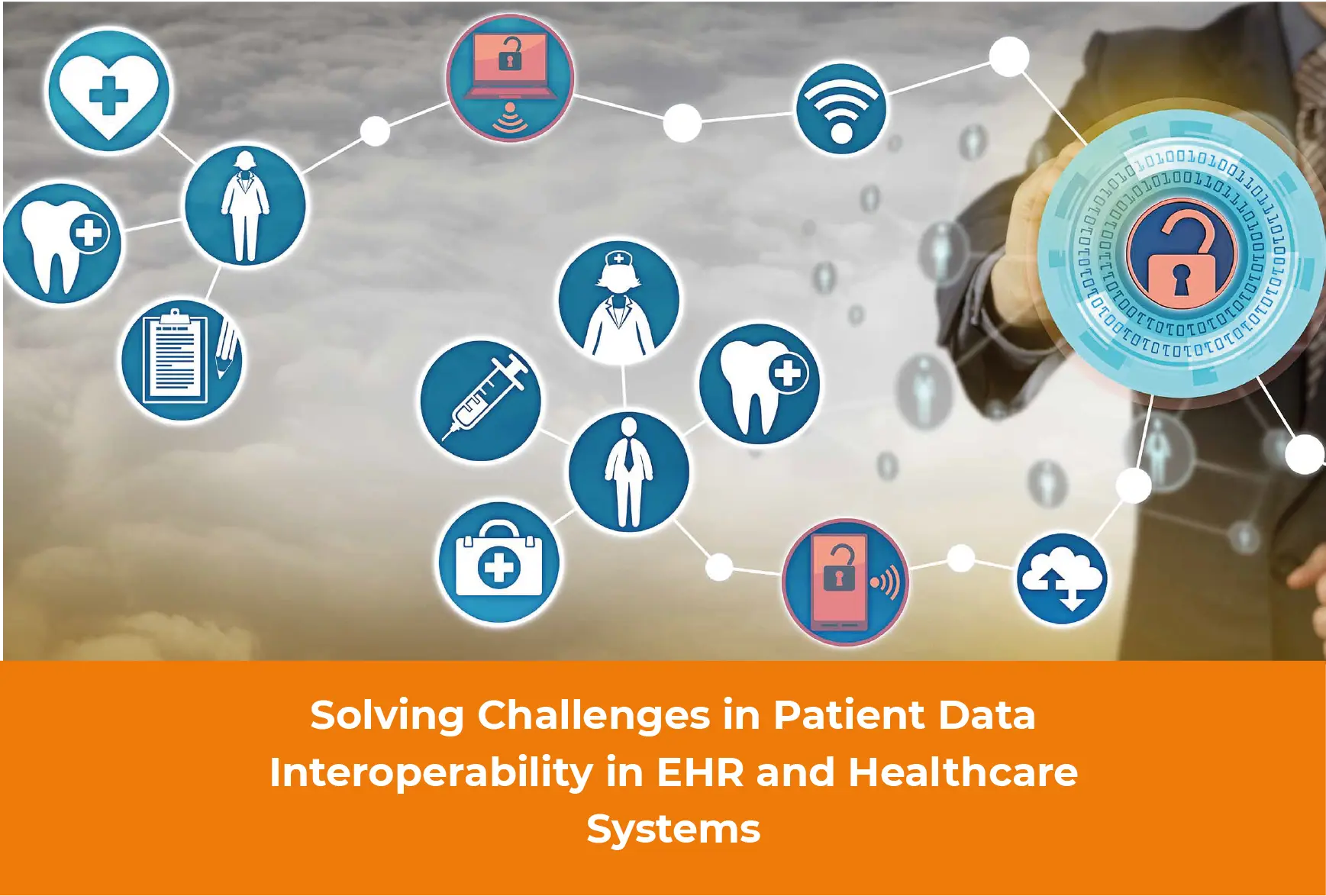Electronic Health Records(EHRs) have revolutionized the healthcare process and emerged as a preferred solution to improve patient care. Moreover, the ubiquitous adoption of EHR over the last few years has become an integral part of the healthcare delivery system. This is the reason, nearly all healthcare enterprises big and small have implemented EHRs to collect and report data. As per the research report, EHR and EMR market size is projected to reach USD 47.6% billion by 2030.
However, despite the adoption of Electronic health records, not all physicians are content with utilizing EHR. Because in the healthcare system integration of one solution to another is a constant challenge that might deter patient care experience. And data interoperability can erase all these challenges and can help healthcare providers achieve better healthcare workflow. Although achieving and maintaining interoperability in EHR presents enormous challenges and too often it stops healthcare providers from completely utilizing EHR and getting the benefit in the long run.
Challenges with Patient Data Interoperability in EHR
- Unique Patient Identifier
On any given day, a healthcare provider often receives multiple patient appointments scheduled for checkups. And in the beginning days of EHR in healthcare, space had minimum or no standardization for identifying patients, storing data, and building care plans. Not having a patient record poses challenges in EHR data interoperability, as the absence of data leaves nothing to store. Also, healthcare providers store these data in multiple systems and databases, which makes it tough to collect, track, and analyze the data which further creates challenges in data interoperability. - Validation and Standardization of Patient Data
Every healthcare organization follows different EHR Standard formats, hence the information that is shared by them also varies. Maintaining the EHR standards as per the rules and regulations and validating the patient data all across the system, is indeed a task for the healthcare provider. Additionally, maintaining the privacy and security of patient data during data interoperability is a must. And manually validating and taking approval for high-volume patient data pose some key difficulties in front of healthcare providers. - Financial Concerns and Investment Costs
Healthcare providers often invest thousands of millions of dollars in EHR systems. And achieving EHR interoperability comes at a cost. In most healthcare organizations, hardly any healthcare professional has the time and skills to perform these tasks. Because when manually performed, this process requires extra manual effort and that will lead to higher costs and longer turnaround times. Apart from the skill and administrative challenges, there are various data trust barriers, IT issues and reporting barriers that limit successful EHR integration.
[Also Read:What is Robotic Process Automation (RPA) in Healthcare? Use Cases, Benefits, and Challenges in 2023]
How RPA and AI is the solution to Data Interoperability?
However, automated data sharing and processing is still underway in healthcare processes but the requirement for real-time information has brought a change in healthcare organizations. With changing competition and offering value care to patients, the need to access real-time information has also increased. But without easy data interoperability, the goal of sharing real-time information is far away.
However, all thanks to RPA and AI that can make the process of sharing information all across the organization and system a cakewalk. Let’s learn how-
- RPA and AI-built tools can help organizations achieve interoperability in healthcare like never before. By leveraging AI technologies like Machine Learning, and OCR, healthcare providers can create an ecosystem of intelligent document processing that can easily collect information from any system, in any format without any manual effort.
- Moreover, this intelligent document processing tool can be trained to encrypt the data it shares with anyone. Having secure data sharing not only helps in building patient trust but also helps healthcare physicians to get detailed insights from past medical records, and x-ray images to offer better diagnosis and patient care.
- Additionally, Intelligent document processing reduces the need for assisting healthcare staff in data extraction and processing. AI-built document processing solutions autonomously offer real-time insights to err out the confusion and offer accurate information.
- Another way through which healthcare data interoperability can be accelerated in the organization is API integration. APIs make it easier for healthcare providers to ensure software interoperability within and across organizations. Their fast deployment time and obstacles-free access to lab results, treatment records, and so on make them a great choice for hospitals. Additionally, they facilitate third-party integration by providing a consistent standard for all systems.
There is no preset path to data interoperability in the healthcare organization but the underlying challenges that organizations often face to meet regulatory compliance and standards can be met by adding the technical capacity of RPA in healthcare. And nothing is more important than making the lives of healthcare staff easier who are working day and night to add more value while offering patient care. Hence, if you are ready to harness the power of RPA and Intelligent Document Processing to ease the data interoperability challenges, then do contact us here.
